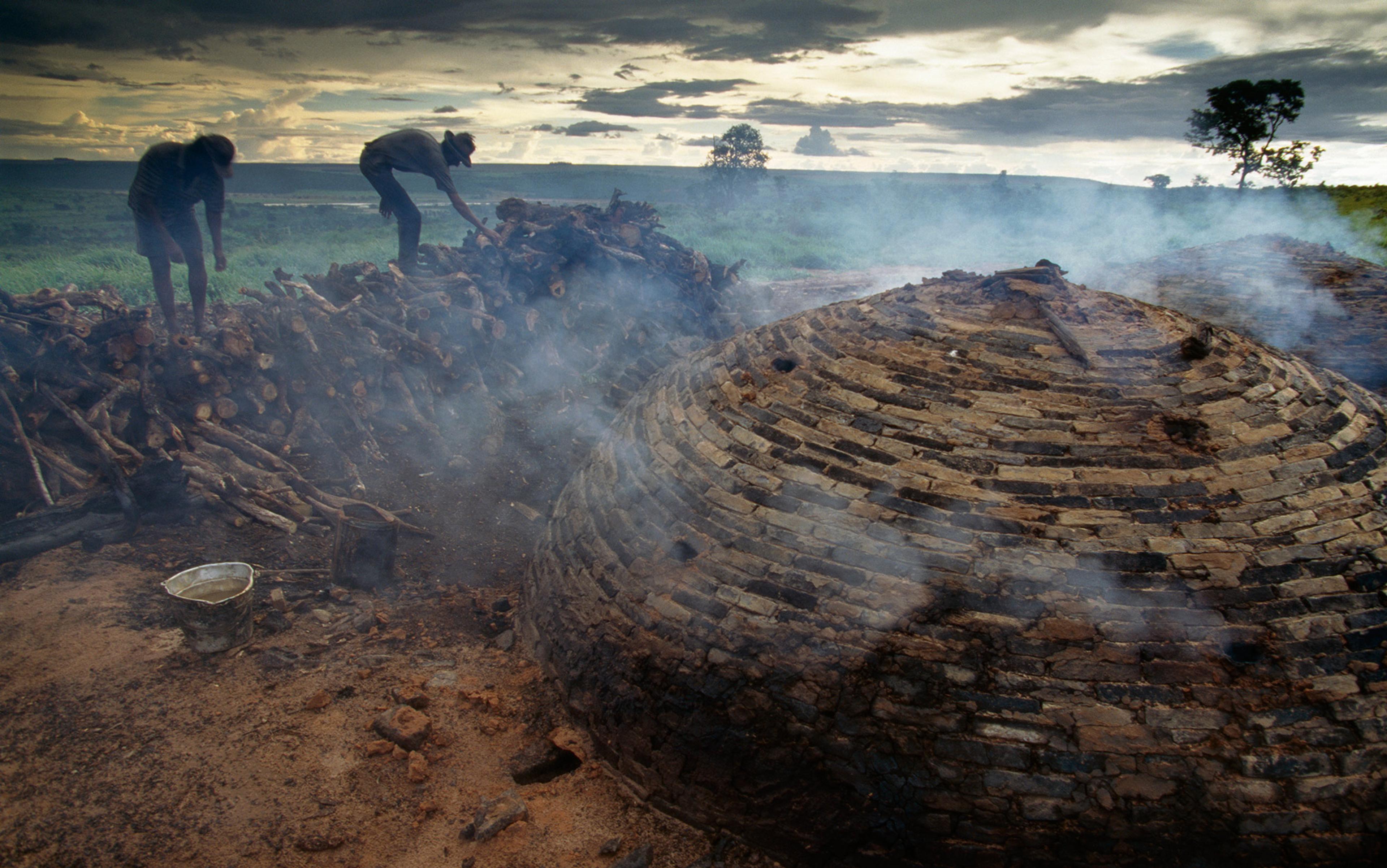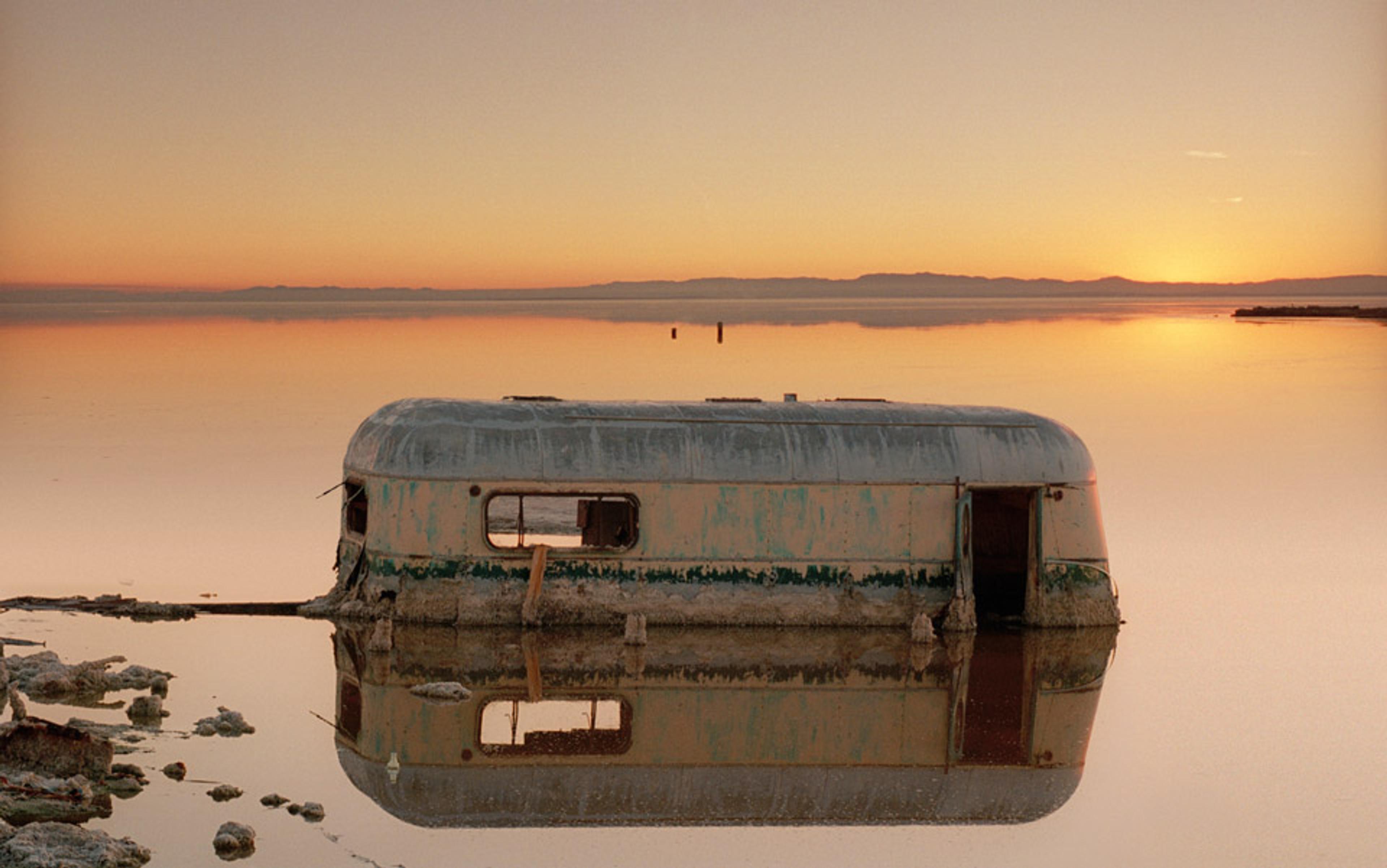Imagine that the world as we know it ends tomorrow. There’s a global catastrophe: a pandemic virus, an asteroid strike, or perhaps a nuclear holocaust. The vast majority of the human race perishes. Our civilisation collapses. The post-apocalyptic survivors find themselves in a devastated world of decaying, deserted cities and roving gangs of bandits looting and taking by force.
Bad as things sound, that’s not the end for humanity. We bounce back. Sooner or later, peace and order emerge again, just as they have time and again through history. Stable communities take shape. They begin the agonising process of rebuilding their technological base from scratch. But here’s the question: how far could such a society rebuild? Is there any chance, for instance, that a post-apocalyptic society could reboot a technological civilisation?
Let’s make the basis of this thought experiment a little more specific. Today, we have already consumed the most easily drainable crude oil and, particularly in Britain, much of the shallowest, most readily mined deposits of coal. Fossil fuels are central to the organisation of modern industrial society, just as they were central to its development. Those, by the way, are distinct roles: even if we could somehow do without fossil fuels now (which we can’t, quite), it’s a different question whether we could have got to where we are without ever having had them.
So, would a society starting over on a planet stripped of its fossil fuel deposits have the chance to progress through its own Industrial Revolution? Or to phrase it another way, what might have happened if, for whatever reason, the Earth had never acquired its extensive underground deposits of coal and oil in the first place? Would our progress necessarily have halted in the 18th century, in a pre-industrial state?
It’s easy to underestimate our current dependence on fossil fuels. In everyday life, their most visible use is the petrol or diesel pumped into the vehicles that fill our roads, and the coal and natural gas which fire the power stations that electrify our modern lives. But we also rely on a range of different industrial materials, and in most cases, high temperatures are required to transform the stuff we dig out of the ground or harvest from the landscape into something useful. You can’t smelt metal, make glass, roast the ingredients of concrete, or synthesise artificial fertiliser without a lot of heat. It is fossil fuels – coal, gas and oil – that provide most of this thermal energy.
In fact, the problem is even worse than that. Many of the chemicals required in bulk to run the modern world, from pesticides to plastics, derive from the diverse organic compounds in crude oil. Given the dwindling reserves of crude oil left in the world, it could be argued that the most wasteful use for this limited resource is to simply burn it. We should be carefully preserving what’s left for the vital repertoire of valuable organic compounds it offers.
But my topic here is not what we should do now. Presumably everybody knows that we must transition to a low-carbon economy one way or another. No, I want to answer a question whose interest is (let’s hope) more theoretical. Is the emergence of a technologically advanced civilisation necessarily contingent on the easy availability of ancient energy? Is it possible to build an industrialised civilisation without fossil fuels? And the answer to that question is: maybe – but it would be extremely difficult. Let’s see how.
We’ll start with a natural thought. Many of our alternative energy technologies are already highly developed. Solar panels, for example, represent a good option today, and are appearing more and more on the roofs of houses and businesses. It’s tempting to think that a rebooted society could simply pick up where we leave off. Why couldn’t our civilisation 2.0 just start with renewables?
Well, it could, in a very limited way. If you find yourself among the survivors in a post-apocalyptic world, you could scavenge enough working solar panels to keep your lifestyle electrified for a good long while. Without moving parts, photovoltaic cells require little maintenance and are remarkably resilient. They do deteriorate over time, though, from moisture penetrating the casing and from sunlight itself degrading the high-purity silicon layers. The electricity generated by a solar panel declines by about 1 per cent every year so, after a few generations, all our hand-me-down solar panels will have degraded to the point of uselessness. Then what?
New ones would be fiendishly difficult to create from scratch. Solar panels are made from thin slices of extremely pure silicon, and although the raw material is common sand, it must be processed and refined using complex and precise techniques – the same technological capabilities, more or less, that we need for modern semiconductor electronics components. These techniques took a long time to develop, and would presumably take a long time to recover. So photovoltaic solar power would not be within the capability of a society early in the industrialisation process.
Perhaps, though, we were on the right track by starting with electrical power. Most of our renewable-energy technologies produce electricity. In our own historical development, it so happens that the core phenomena of electricity were discovered in the first half of the 1800s, well after the early development of steam engines. Heavy industry was already committed to combustion-based machinery, and electricity has largely assumed a subsidiary role in the organisation of our economies ever since. But could that sequence have run the other way? Is there some developmental requirement that thermal energy must come first?
On the face of it, it’s not beyond the bounds of possibility that a progressing society could construct electrical generators and couple them to simple windmills and waterwheels, later progressing to wind turbines and hydroelectric dams. In a world without fossil fuels, one might envisage an electrified civilisation that largely bypasses combustion engines, building its transport infrastructure around electric trains and trams for long-distance and urban transport. I say ‘largely’. We couldn’t get round it all together.
when it comes to generating the white heat demanded by modern industry, there are few good options but to burn stuff
While the electric motor could perhaps replace the coal-burning steam engine for mechanical applications, society, as we’ve already seen, also relies upon thermal energy to drive the essential chemical and physical transformations it needs. How could an industrialising society produce crucial building materials such as iron and steel, brick, mortar, cement and glass without resorting to deposits of coal?
You can of course create heat from electricity. We already use electric ovens and kilns. Modern arc furnaces are used for producing cast iron or recycling steel. The problem isn’t so much that electricity can’t be used to heat things, but that for meaningful industrial activity you’ve got to generate prodigious amounts of it, which is challenging using only renewable energy sources such as wind and water.
An alternative is to generate high temperatures using solar power directly. Rather than relying on photovoltaic panels, concentrated solar thermal farms use giant mirrors to focus the sun’s rays onto a small spot. The heat concentrated in this way can be exploited to drive certain chemical or industrial processes, or else to raise steam and drive a generator. Even so, it is difficult (for example) to produce the very high temperatures inside an iron-smelting blast furnace using such a system. What’s more, it goes without saying that the effectiveness of concentrated solar power depends strongly on the local climate.
No, when it comes to generating the white heat demanded by modern industry, there are few good options but to burn stuff.
But that doesn’t mean the stuff we burn necessarily has to be fossil fuels.
Let’s take a quick detour into the pre-history of modern industry. Long before the adoption of coal, charcoal was widely used for smelting metals. In many respects it is superior: charcoal burns hotter than coal and contains far fewer impurities. In fact, coal’s impurities were a major delaying factor on the Industrial Revolution. Released during combustion, they can taint the product being heated. During smelting, sulphur contaminants can soak into the molten iron, making the metal brittle and unsafe to use. It took a long time to work out how to treat coal to make it useful for many industrial applications. And, in the meantime, charcoal worked perfectly well.
And then, well, we stopped using it. In retrospect, that’s a pity. When it comes from a sustainable source, charcoal burning is essentially carbon-neutral, because it doesn’t release any new carbon into the atmosphere – not that this would have been a consideration for the early industrialists.
But charcoal-based industry didn’t die out altogether. In fact, it survived to flourish in Brazil. Because it has substantial iron deposits but few coalmines, Brazil is the largest charcoal producer in the world and the ninth biggest steel producer. We aren’t talking about a cottage industry here, and this makes Brazil a very encouraging example for our thought experiment.
The trees used in Brazil’s charcoal industry are mainly fast-growing eucalyptus, cultivated specifically for the purpose. The traditional method for creating charcoal is to pile chopped staves of air-dried timber into a great dome-shaped mound and then cover it with turf or soil to restrict airflow as the wood smoulders. The Brazilian enterprise has scaled up this traditional craft to an industrial operation. Dried timber is stacked into squat, cylindrical kilns, built of brick or masonry and arranged in long lines so that they can be easily filled and unloaded in sequence. The largest sites can sport hundreds of such kilns. Once filled, their entrances are sealed and a fire is lit from the top.
The skill in charcoal production is to allow just enough air into the interior of the kiln. There must be enough combustion heat to drive out moisture and volatiles and to pyrolyse the wood, but not so much that you are left with nothing but a pile of ashes. The kiln attendant monitors the state of the burn by carefully watching the smoke seeping out of the top, opening air holes or sealing with clay as necessary to regulate the process.
Brazil shows how the raw materials of modern civilisation can be supplied without reliance on fossil fuels
Good things come to those who wait, and this wood pyrolysis process can take up to a week of carefully controlled smouldering. The same basic method has been used for millennia. However, the ends to which the fuel is put are distinctly modern. Brazilian charcoal is trucked out of the forests to the country’s blast furnaces where it is used to transform ore into pig iron. This pig iron is the basic ingredient of modern mass-produced steel. The Brazilian product is exported to countries such as China and the US where it becomes cars and trucks, sinks, bathtubs, and kitchen appliances.
Around two-thirds of Brazilian charcoal comes from sustainable plantations, and so this modern-day practice has been dubbed ‘green steel’. Sadly, the final third is supplied by the non-sustainable felling of primary forest. Even so, the Brazilian case does provide an example of how the raw materials of modern civilisation can be supplied without reliance on fossil fuels.
Another, related option might be wood gasification. The use of wood to provide heat is as old as mankind, and yet simply burning timber only uses about a third of its energy. The rest is lost when gases and vapours released by the burning process blow away in the wind. Under the right conditions, even smoke is combustible. We don’t want to waste it.
Better than simple burning, then, is to drive the thermal breakdown of the wood and collect the gases. You can see the basic principle at work for yourself just by lighting a match. The luminous flame isn’t actually touching the matchwood: it dances above, with a clear gap in between. The flame actually feeds on the hot gases given off as the wood breaks down in the heat, and the gases combust only once they mix with oxygen from the air. Matches are fascinating when you look at them closely.
Wartime gasifier cars could achieve about 1.5 miles per kilogram. Today’s designs improve upon this
To release these gases in a controlled way, bake some timber in a closed container. Oxygen is restricted so that the wood doesn’t simply catch fire. Its complex molecules decompose through a process known as pyrolysis, and then the hot carbonised lumps of charcoal at the bottom of the container react with the breakdown products to produce flammable gases such as hydrogen and carbon monoxide.
The resultant ‘producer gas’ is a versatile fuel: it can be stored or piped for use in heating or street lights, and is also suitable for use in complex machinery such as the internal combustion engine. More than a million gasifier-powered cars across the world kept civilian transport running during the oil shortages of the Second World War. In occupied Denmark, 95 per cent of all tractors, trucks and fishing boats were powered by wood-gas generators. The energy content of about 3 kg of wood (depending on its dryness and density) is equivalent to a litre of petrol, and the fuel consumption of a gasifier-powered car is given in miles per kilogram of wood rather than miles per gallon. Wartime gasifier cars could achieve about 1.5 miles per kilogram. Today’s designs improve upon this.
But you can do a lot more with wood gases than just keep your vehicle on the road. It turns out to be suitable for any of the manufacturing processes needing heat that we looked at before, such as kilns for lime, cement or bricks. Wood gas generator units could easily power agricultural or industrial equipment, or pumps. Sweden and Denmark are world leaders in their use of sustainable forests and agricultural waste for turning the steam turbines in power stations. And once the steam has been used in their ‘Combined Heat and Power’ (CHP) electricity plants, it is piped to the surrounding towns and industries to heat them, allowing such CHP stations to approach 90 per cent energy efficiency. Such plants suggest a marvellous vision of industry wholly weaned from its dependency on fossil fuel.
Is that our solution, then? Could our rebooting society run on wood, supplemented with electricity from renewable sources? Maybe so, if the population was fairly small. But here’s the catch. These options all presuppose that our survivors are able to construct efficient steam turbines, CHP stations and internal combustion engines. We know how to do all that, of course – but in the event of a civilisational collapse, who is to say that the knowledge won’t be lost? And if it is, what are the chances that our descendants could reconstruct it?
In our own history, the first successful application of steam engines was in pumping out coal mines. This was a setting in which fuel was already abundant, so it didn’t matter that the first, primitive designs were terribly inefficient. The increased output of coal from the mines was used to first smelt and then forge more iron. Iron components were used to construct further steam engines, which were in turn used to pump mines or drive the blast furnaces at iron foundries.
And of course, steam engines were themselves employed at machine shops to construct yet more steam engines. It was only once steam engines were being built and operated that subsequent engineers were able to devise ways to increase their efficiency and shrink fuel demands. They found ways to reduce their size and weight, adapting them for applications in transport or factory machinery. In other words, there was a positive feedback loop at the very core of the industrial revolution: the production of coal, iron and steam engines were all mutually supportive.
In a world without readily mined coal, would there ever be the opportunity to test profligate prototypes of steam engines, even if they could mature and become more efficient over time? How feasible is it that a society could attain a sufficient understanding of thermodynamics, metallurgy and mechanics to make the precisely interacting components of an internal combustion engine, without first cutting its teeth on much simpler external combustion engines – the separate boiler and cylinder-piston of steam engines?
It took a lot of energy to develop our technologies to their present heights, and presumably it would take a lot of energy to do it again. Fossil fuels are out. That means our future society will need an awful lot of timber.
an industrial revolution without coal would be, at a minimum, very difficult
In a temperate climate such as the UK’s, an acre of broadleaf trees produces about four to five tonnes of biomass fuel every year. If you cultivated fast-growing kinds such as willow or miscanthus grass, you could quadruple that. The trick to maximising timber production is to employ coppicing – cultivating trees such as ash or willow that resprout from their own stump, becoming ready for harvest again in five to 15 years. This way you can ensure a sustained supply of timber and not face an energy crisis once you’ve deforested your surroundings.
But here’s the thing: coppicing was already a well-developed technique in pre-industrial Britain. It couldn’t meet all of the energy requirements of the burgeoning society. The central problem is that woodland, even when it is well-managed, competes with other land uses, principally agriculture. The double-whammy of development is that, as a society’s population grows, it requires more farmland to provide enough food and also greater timber production for energy. The two needs compete for largely the same land areas.
We know how this played out in our own past. From the mid-16th century, Britain responded to these factors by increasing the exploitation of its coal fields – essentially harvesting the energy of ancient forests beneath the ground without compromising its agricultural output. The same energy provided by one hectare of coppice for a year is provided by about five to 10 tonnes of coal, and it can be dug out of the ground an awful lot quicker than waiting for the woodland to regrow.
It is this limitation in the supply of thermal energy that would pose the biggest problem to a society trying to industrialise without easy access to fossil fuels. This is true in our post-apocalyptic scenario, and it would be equally true in any counterfactual world that never developed fossil fuels for whatever reason. For a society to stand any chance of industrialising under such conditions, it would have to focus its efforts in certain, very favourable natural environments: not the coal-island of 18th-century Britain, but perhaps areas of Scandinavia or Canada that combine fast-flowing streams for hydroelectric power and large areas of forest that can be harvested sustainably for thermal energy.
Even so, an industrial revolution without coal would be, at a minimum, very difficult. Today, use of fossil fuels is actually growing, which is worrying for a number of reasons too familiar to rehearse here. Steps towards a low-carbon economy are vital. But we should also recognise how pivotal those accumulated reservoirs of thermal energy were in getting us to where we are. Maybe we could have made it the hard way. A slow-burn progression through the stages of mechanisation, supported by a combination of renewable electricity and sustainably grown biomass, might be possible after all. Then again, it might not. We’d better hope we can secure the future of our own civilisation, because we might have scuppered the chances of any society to follow in our wake.
For more information on this thought experiment on the behind-the-scenes fundamentals of how our world works and how you could reboot civilisation from scratch visit www.the-knowledge.org






